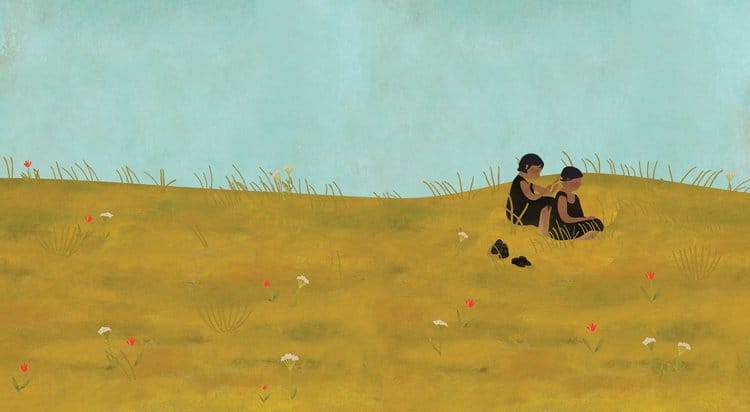Residential School Picture Books

This month, my students are learning about residential schools in Canada and human rights. This is an essential topic as Canada moves down the path of reconciliation. The natural first step is to educate people about what happened. My aim is to make sure my students understand how Indigenous children were forced to attend schools away from their families, facing abusive treatment, as their language, culture, and beliefs were taken away. The whole system negatively affected generations of Indigenous people. It is important that students learn more about this chapter of Canada's history, so we can all move towards reconciliation and a better Canada for everyone.
There are many excellent books out there to help teach about residential schools. Secret Path, a collaborative project between Gord Downie and Jeff Lemire has received a great deal of favourable press. However, a host of other resources exist, particularly ones by Indigenous authors and artists. Hearing from these authors is essential to understanding Indigenous perspectives. With that in mind, here is a list of picture books that discuss residential schools.
-
When We Were Alone by David A. Robertson and Julie Flett. This is probably my favourite picture book on this topic. It features a grandmother telling her granddaughter about her time in residential school. It describes her small acts of resistance that helped her survive the experience, but in a way appropriate for a small child to hear. The book deals with a hard subject in a tender way and it is no surprise it recently won the Governor General's Award.
-
Stolen Words by Melanie Florence. Inspired by the author's grandfather, in this book a grandfather tells his granddaughter how his words were stolen in a residential school. It features a measure of healing as the pair regain some of the lost language together.
-
Shi-shi-etko by Nicola I. Campbell. Rather than telling the story of residential schools, this book recounts the last few days leading up to leaving for school. Shi-shi-etko's family tries to teach her as much traditional knowledge as they can and savour her last few days before her departure. It is a bittersweet tale, compounded by the autumn colours that serve to remind the reader of the end of summer.
-
Shin-chi's Canoe by Nicola I. Campbell. The companion book to Shi-shi-etko tells of her little brother Shin-chi and his experiences at the residential school the following year. It describes the day to day experiences at school.
-
When I Was Eight (picture book) and Fatty Legs (novel) by Christy Jordan-Fenton and Margaret Pokiak Fenton. Interestingly, this memoir comes in two versions, a short novel appropriate for late elementary school and a picture book appropriate for younger students. The memoir also tells the story of life at the residential schools in Northern Canada for Olemaun. In particular, it focuses on an act of defiance in the face of mistreatment.
-
Not My Girl (picture book) and Stranger at Home (novel) by Christy Jordan-Fenton and Margaret Pokiak Fenton. This second memoir, focuses on Olemaun's return home and her struggle to find acceptance in her community after being changed by the school.
-
I Am Not A Number by Jenny Kay Dupuis and Kathy Kacer. This book tells the true story of Irene Couchie Dupuis, who was a residential school survivor. Telling of her year at the residential school, it is at times a bleaker story than some of the other books in this list. This serves to effectively show how the students were dehumanized. The ending demonstrates a rare instance of a family successfully defying the system.
-
As Long as the Rivers Flow by Larry Loyie with Constance Brissenden. This book tells Larry Loyie's last summer before being taken to a residential school. Like in Shi-Shi-Etko, it tells of his time with his family, learning traditional knowledge. This book is a longer read and a more detailed account.
-
Sugar Falls by David A. Robertson and Scott B. Henderson. Sugar Falls is a graphic novel and for a more mature audience, due to abuse and death contained in the book. The graphic novel is compelling, since it doesn't shy away from examining the harsh realities of the residential school system.
Teaching about residential schools can be difficult. The realities of what happened are harsh and often difficult to face. I have found that using picture books is a good jumping off point. Even in middle school, they can help provide some insight into what happened from the students' perspective. Since picture books are short, students can read a number of different accounts and better examine the experiences of residential school survivors. With this greater understanding, students can better appreciate survivors' stories and the importance of reconciliation.
I am always on the lookout for new books. Any one out there have some suggestions? What texts have you found useful for truth and reconciliation?









